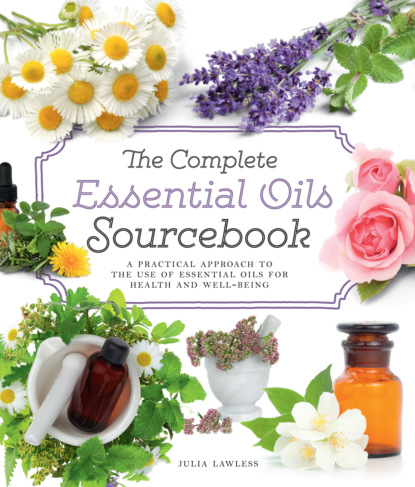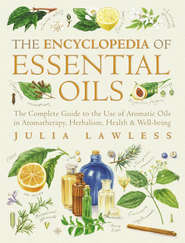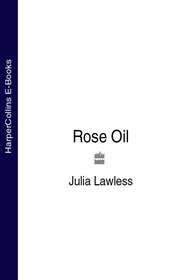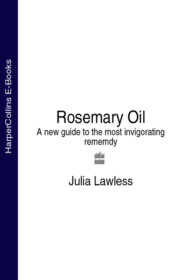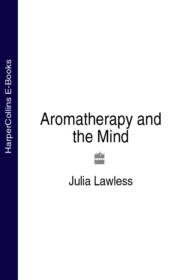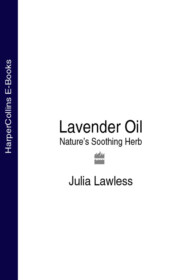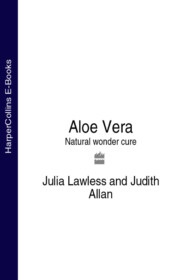По всем вопросам обращайтесь на: info@litportal.ru
(©) 2003-2024.
✖
The Complete Essential Oils Sourcebook: A Practical Approach to the Use of Essential Oils for Health and Well-Being
Настройки чтения
Размер шрифта
Высота строк
Поля
FLORAL | LAVENDER
A good perfume has a range of top, middle, and base notes.
In the art of blending, balance is everything. In his book The Art of Perfumery, Charles Piesse was the first to draw an analogy between odors and sounds. To create a perfect “bouquet” of odors, he chose scents that combined to create a harmonious chord and added other scents to act as half-notes.
Modern perfumery still uses Piesse’s terms to describe the art of blending, although in a simplified form. The perfume should be a perfect balance between the top, middle, and base notes. The top notes are immediately apparent—the ones that are light and fresh—and are the most volatile ingredients. Typical top notes include lime, lemon, and bergamot. The middle note lies at the heart of the fragrance, and usually forms the bulk of the blend—typical middle notes are florals such as lavender, rose, or geranium. The base note gives depth to the fragrance and acts as a fixative for the more volatile components—typical base notes include oakmoss, benzoin, or patchouli.
Another simple way of blending oils is to put them into families. Fragrances from the same family tend to mix together well, as well as with those from neighboring families. A small proportion of a scent from an opposed or diverse family can add interest or piquancy to an otherwise dull blend.
NEROLI
PETITGRAIN
A fine perfume is worthy of a fine container.
The art of perfumery is as old as civilization.
Fragrance families (#ulink_fe975c56-6a80-5bef-ad84-570c176b6e60)
THE BIRTH OF modern Western perfumery as we know it today occurred during the 14th century with the discovery of alcoholic extraction techniques. Before that time, perfumes had been based on fatty or oily materials which did not allow the finesse afforded by alcohol or synthetics. Many modern perfumers consider that it is impossible to make a good perfume without the use of synthetics or alcohol. This is because these ingredients can impart lift, radiance, and diffusion to an accord. In their view, only eau-de-Colognes can be made wholly from simple, natural ingredients (known as naturals).
On the other hand, synthetics can have a flat and two-dimensional quality, whereas natural essences are more full-bodied and complex. In addition, many people are sensitive to certain chemicals used in modern perfumes and toiletries, which can cause skin allergies, headaches, or other side effects in sensitive individuals. Some modern perfumes contain well over 100 different ingredients or compounds, but for the purpose of aromatherapy, it is enough to blend as few as three oils to produce an interesting result. This is because pure essential oils, unlike synthetic chemical fragrances used in modern perfumery, already contain many different components, each being made up, in some cases, of hundreds of different constituents, including trace elements. Rose oil, for example, contains over 300 constituents, which is why it is so difficult to imitate it or to construct a “nature identical” rose scent.
Many essential oils are a complex blend of fragrances in their own right. Using this perfumery dial helps in analyzing the individual elements and building up a fragrance profile for a particular oil. The dial is shown marked up for rose oil.
MANDARIN
To gain familiarity with the different essences and to develop your sense of discrimination, test oils individually. Do not smell essential oils directly from the bottle. Always use a strip of blotting paper. Ideally, dilute the oil to 50 percent, using a bland base. Dip the paper into the essence, then study the odor immediately. After a few minutes smell it again, then periodically over several hours. You will see that the most volatile components will rise quickly up the blotting paper and disperse, while the more viscous elements will remain at the tip. Mark the strip clearly at the other end and record your results on the perfumery dial shown below, starting at the top with the floral notes and then moving round the face. For example, if floral notes are absent, put a dot in the center; if predominant, put a dot in the outer circle. Continue around the circle, trying to detect each note in turn, to complete the profile.
Fragrance families and their effects
The following table is based on the Austrian perfumer, Jellinek’s concept of relating perfumes to skin and hair type.
Fresh (blond)
GREEN
Reviving (e.g. thyme)
HERBACEOUS
Stimulating (e.g. basil)
MEDICINAL
Clearing (e.g. eucalyptus)
Soothing (brunette)
SPICY
Warming (e.g. nutmeg)
WOODY
Appeasing (e.g. sandalwood)
EARTHY
Grounding (e.g. vetivert)
Sultry (black)
MUSKY
Aphrodisiac (e.g. patchouli)
ORIENTAL
Comforting (e.g. benzoin)
HONEY
Heady (e.g. ylang ylang)
Exalting (red)
FLORAL
Uplifting (e.g. geranium)
FRUITY
Enlivening (e.g. petitgrain)
CITRUS
Refreshing (e.g. lemon)
Trying to identify or verbalize a particular scent is difficult, yet odor classification is most important for developing scent discrimination and perfecting the art of blending. In modern perfumery work, this discrimination includes knowledge of all the synthetic fragrances now available. Indol, for example, is a natural component of jasmine absolute, now produced chemically. In concentration, it smells strongly camphoraceous, but in minute proportions it adds sweetness and volume to heavy, floral-based accords. In psycho-aromatherapy, however, the groups of aromas are wholly natural in origin, as in original perfumery classifications.
(#ulink_fe975c56-6a80-5bef-ad84-570c176b6e60)
Aromatherapy massage (#ulink_2daf4cf3-7cdf-52c9-9766-9d90fb217c0c)
Massage is one of the most fundamental forms of therapy, and has been utilized by many diverse cultures for thousands of years. The need to be touched is itself an essential and primitive human instinct, for without physical contact, the overall health of the individual suffers. Recent research has shown that a lack of tactile contact is associated with immune depression, and positive touch with immune stimulation.
Over the course of time, many different massage techniques have been developed, each having its own individual therapeutic approach. The oriental art of shiatsu massage, for example, works primarily with specific pressure points along the lines of the meridians or channels of energy in the body, to influence the overall balance of energy within the body, much like acupuncture. In contrast, the Western style of Swedish massage concentrates more on releasing areas of tension trapped within the muscles, joints, and connective tissues of the body. Even performing the same stroke in different ways can produce different effects. A single movement performed vigorously can stimulate the body, while a similar movement performed slowly can promote relaxation.
Другие электронные книги автора Julia Lawless
Rose Oil




 0
0





